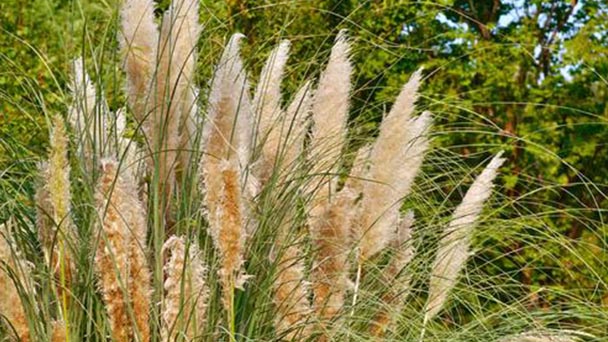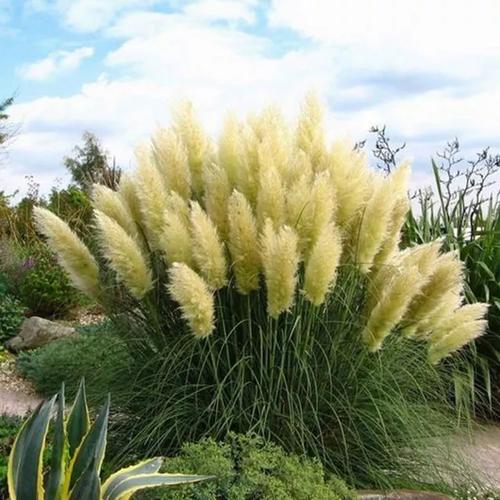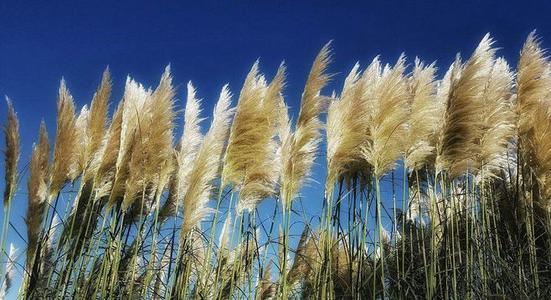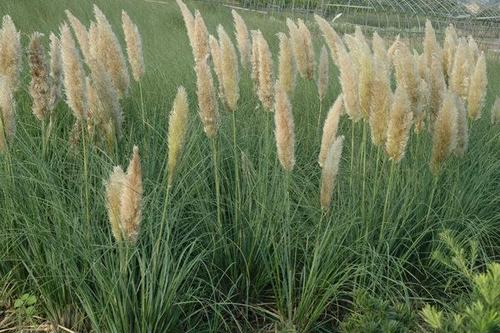Pampas grass profile
Written by Maggie
Dec 19 2020

Pampas grass is a genus of Pampas grass, distributed in North, central, South, East and Northeast China.
Pampas grass stems are fascicular, dioecious, leaves clustered at base, extremely narrow, pygmy Pampas are robust, hardy, and prefer warm, sunny, and humid climates.
Pampas grass picture

Morphological characteristics of Pampas grass
Pampas grass stems are extremely narrow, about 1m long and 2cm wide, pendulous, margin finely toothed, gray-green, with short hairs. Panicles are large, female panicles silvery white, lustrous, spikelets with dense silk hairs at the cob nodes, spikelets composed of 2-3 flowers. Male spike for wide tower shape, is sparsely weak. Pampas grass flowering period: September to October. Pampas grass is perennial, dioecious. Pampas grass are tall and stout, clustered, 2-3 m high. The leaf tongue is a ring of densely pilose, 2-4 mm long; The leaf blade is hard, narrow, clustered at culm-base, 1-3 m long, margin serrate coarsely. Panicles are large, dense, 50-100 cm long, silvery white to pink; The female flower sequence is wider and the male flower sequence is narrower. Pampas grass Spikelet is with 2-3 florets, female spikelet filiform pilose, male spikelet glabrous; Glumes are thin, slender, white, lemma apically elongated and slender awn.
Pampas grass growth environment
Pampas grass is strong and hardy, and prefers a warm, humid, sunny climate.
Distribution range of Pampas Grass
Pampas Grass is introduced in Shanghai, Nanjing, Beijing and other parks for cultivation and ornamental use, mostly distributed in America.Type specimens were collected from Montevideo, Uruguay.

Pampas grass adapted region
Pampas grass is adapted in North China, Central China, South China, East China and Northeast China.
The origin of Pampas grass
North China, Central China, South China, East China and Northeast China
Pampas Grass main value
For flower viewing, Pampas grass has long and beautiful panicles, which are planted in spectacular and elegant courtyards, or planted on the banks to enjoy the panicles of its silvery pinnate panicles in autumn. It can also be used as dried flowers or ornamental grass gardens with excellent ecological adaptability and ornamental value.
Pampas Grass methods of reproduction
Pampas grass has no strict requirements on the soil, which is easy to be cultivated and extensively managed, and can be wintered in open fields. In spring, the plant can be divided and propagated, but in autumn, the plant is easy to die.

Latest Updated
- Benefits of Bugleweed - 7 Science-backed Health Benefits
- Bugleweed Dangers & Side Effects - Is It Poisonous?
- How to Plant Evergreen Trees - What You Should Know
- When to Plant Evergreens - Grow Guide for Evergreen Trees
- 12 Wonderful Evergreen Shrubs for Your Garden
- 12 Popular Evergreen Plants with Pictures for Beginners
- When And How To Prune A Lilac Bush Like a Pro
- How to Grow & Care for Lilac Vine (Hardenbergia Violacea)
- Japanese Lilac Tree (Syringa Reticulata) Care & Propagation Guide
- Shumard Oak Pros and Cons - What to Know
Popular Articles
- Winter maintenance of Antirrhinum Majus
- How to Grow Terminalia Mantaly Tree
- How to Grow and Care for Crossostephium Chinense
- How to grow Antirrhinum Majus in spring
- Peristeria Elata (Dove Orchid) Profile: Info & Care Guide
- Underwatered Snake Plant (Sansevieria Trifasciata) - Signs And How To Fix
- How to Care for Brazilian Jasmine Plant (Mandevilla Sanderi)
- How to Grow & Care for Graptopetalum Purple Delight in Summer
- Rosa Chinensis (China Rose): Plant Growing & Care Tips
- How to Care for Baby Sun Rose (Aptenia Cordifolia)